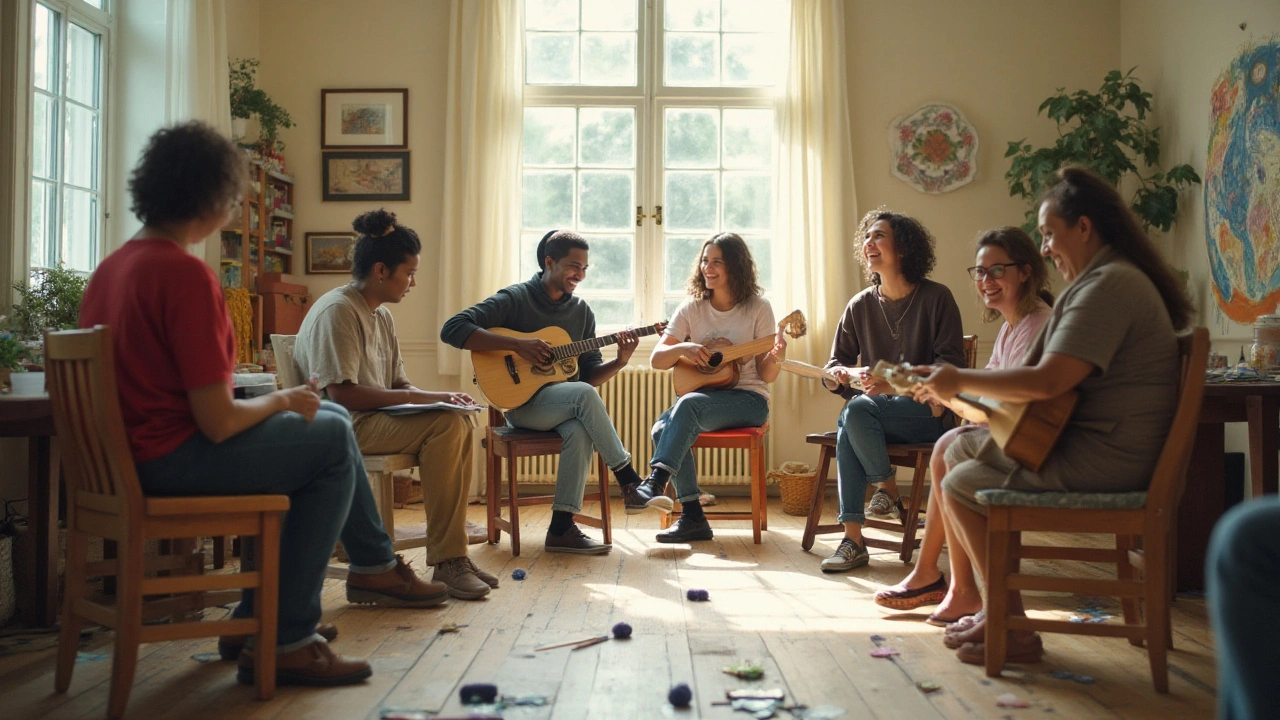Therapeutic Art: Simple Creative Practices That Help You Feel Better
Want a way to calm your mind without pills or long sessions? Therapeutic art uses simple creative acts—drawing, music, movement, even scent—to lower stress, shift mood, and make hard feelings easier to handle. You don’t need to be an artist. Small, regular creative moves change how your brain reacts to tension and give you tools you can use anytime.
Therapeutic art sits next to things like meditation, biofeedback, and massage. Each method taps a different route to the same goal: less stress, clearer thinking, and more energy. For example, art gives your emotions a safe place to show up; music redirects your attention; movement loosens the body; aromatherapy can change your mood fast. Mix and match what fits your life.
Quick therapeutic art exercises you can try today
Start with 10 minutes. Short practices work better than rare big sessions.
Doodle for focus: Put a pen to paper and draw a repeating shape for five minutes. No plan, no judgment. This slows racing thoughts and helps you notice feelings without getting stuck in them.
Clay or dough for tension: Squeeze and shape soft clay for five to ten minutes when you feel tight. The hands calm the nervous system and give the body a hands-on way to release stress.
Sound break: Make a playlist of three songs that shift your mood—one to ground you, one to lift energy, one to relax. Use the list when you need a reset between tasks.
Movement sketch: Put on a short song and move however your body wants for the length of the track. No choreography. This reconnects breath and body and quickly lowers stress markers.
Guided visual: Close your eyes and picture a place that feels safe for two minutes. Name three small details (sound, color, texture). This tiny visual break helps reduce anxiety fast.
How to make therapeutic art actually work
Be regular. Five minutes daily beats one hour once a month. Keep materials simple: a notebook, a basic playlist, modeling clay, or a small speaker. Use an exercise when you notice a trigger—before you spiral or before sleep.
Combine tools. Try breathing for one minute, then doodle for five, then play a calming tune. Pairing creative acts with breathing or a short massage can deepen the effect. If you want measurements, biofeedback tools can show real changes in heart rate or skin response as you practice.
Look for help if feelings feel too big. Therapeutic art is a tool, not a full replacement for therapy when you need it. If you're curious, check related guides on creative arts therapies, meditation, aromatherapy, and simple bodywork for practical how-to steps and real-life examples.
Start small, pick one practice, and stick with it for two weeks. You’ll notice small shifts—better sleep, fewer panicked moments, clearer thinking. That’s where therapeutic art earns its keep: tiny habits that add up to real change.

Creative Arts Therapies: Unlocking the Power of Art for Healing
Creative arts therapies offer unique approaches to healing and personal development using the transformative power of the arts. These therapies encompass a variety of practices, including art therapy, music therapy, dance therapy, and drama therapy, each designed to improve emotional well-being and mental health. By tapping into creative expression, individuals can process emotions, communicate non-verbally, and discover new insights about themselves. Whether for stress relief, trauma recovery, or personal growth, creative arts therapies provide supportive environments for individuals to explore their inner worlds. This exploration helps foster resilience, empathy, and healing.

Hellerwork: The Essential Guide for Beginners
Aug, 8 2023

Unwind Effortlessly with Lomi Lomi Massage
Feb, 21 2025


